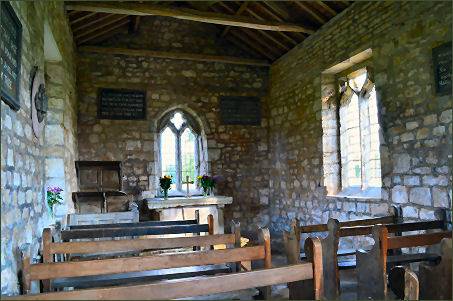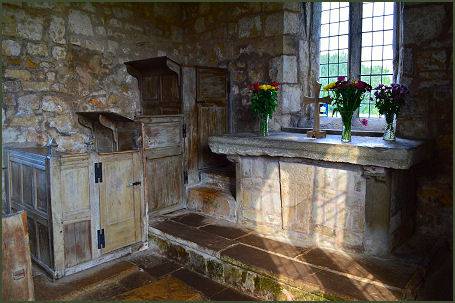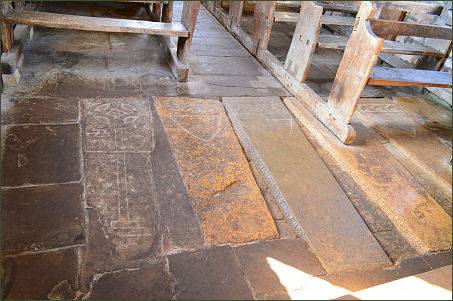St. Mary's Chapel, Lead
OS grid reference:- SE 464 368
St. Mary's Chapel at Lead, to the west of Saxton, stands near to the site of the battle of Towton of 1461, one of the bloodiest battles on English soil, Towton was a resounding Yorkist victory which secured Edward IV's position on England's throne. 10,000 men are said to have lost their lives on that fateful day and it is reported that Cock Beck, the stream the visitor crosses to get to the chapel , ran red with blood after Towton. The small chapel provided shelter for some of the combatants on that freezing cold March day in 1461 has changed little over the passing centuries. The village associated with the church disappeared in the late middle ages.


The chapel dates from the fourteenth century and stands solitary in the middle of a field, opposite the Crooked Billet pub near Saxton. The pub was used as the Yorkist headquarters and possibly served as a resting place by the wounded Yorkist commander Richard Neville, Earl of Warwick, during the battle. It was probably the chapel for a medieval manor house which has not survived. It is believed to have been built for the Tyas family and later passed to the Scargill family. The last recorded resident of the manor was Sir Robert Scargill, who died in 1531. Evidence was unearthed in 1934 that an earlier chapel once occupied the site, when excavations revealed an Anglo- Saxon grave slab which dated back to the ninth or tenth century, as well as the foundations of a larger church or chapel measuring some 23 feet (7.0 m) long that contained two stone coffins.


The present chapel measures 18 feet (5.5 m) long and has a rectangular plan, with a bellcote at the west end. The interior is very simple, containing benches which possibly date from the medieval period. It also contains a three-decker pulpit, a stone altar, and a font. On the east wall of the chapel are boards containing sentences from the Holy Communion service which date back to the eighteenth century. The huge massive slabs of the Tyas family are set into the floor. Carved with heraldic symbols and inscriptions, they date from the thirteenth century and there are further tombs to Scargill family near the altar.


Repairs to the chapel were carried out in the late nineteeth and early twentieth centuries. However, by 1931 the condition of the chapel had deteriorated badly and it was saved by a group of local ramblers, since when it has been known as the Ramblers' Church. The eighteenth century communion rails were removed, the three-decker pulpit was moved into the northeast corner of the chapel, a stone altar was built, and the medieval altar slab was laid on its top. It is thought that the font was also moved at this time. Further restoration work was carried out in 1934 although the chapel has no electricity..


St. Mary's is managed by the Churches Conservation Trust.
Images courtesy of Paul Johnson
Historic Buildings of Yorkshire
